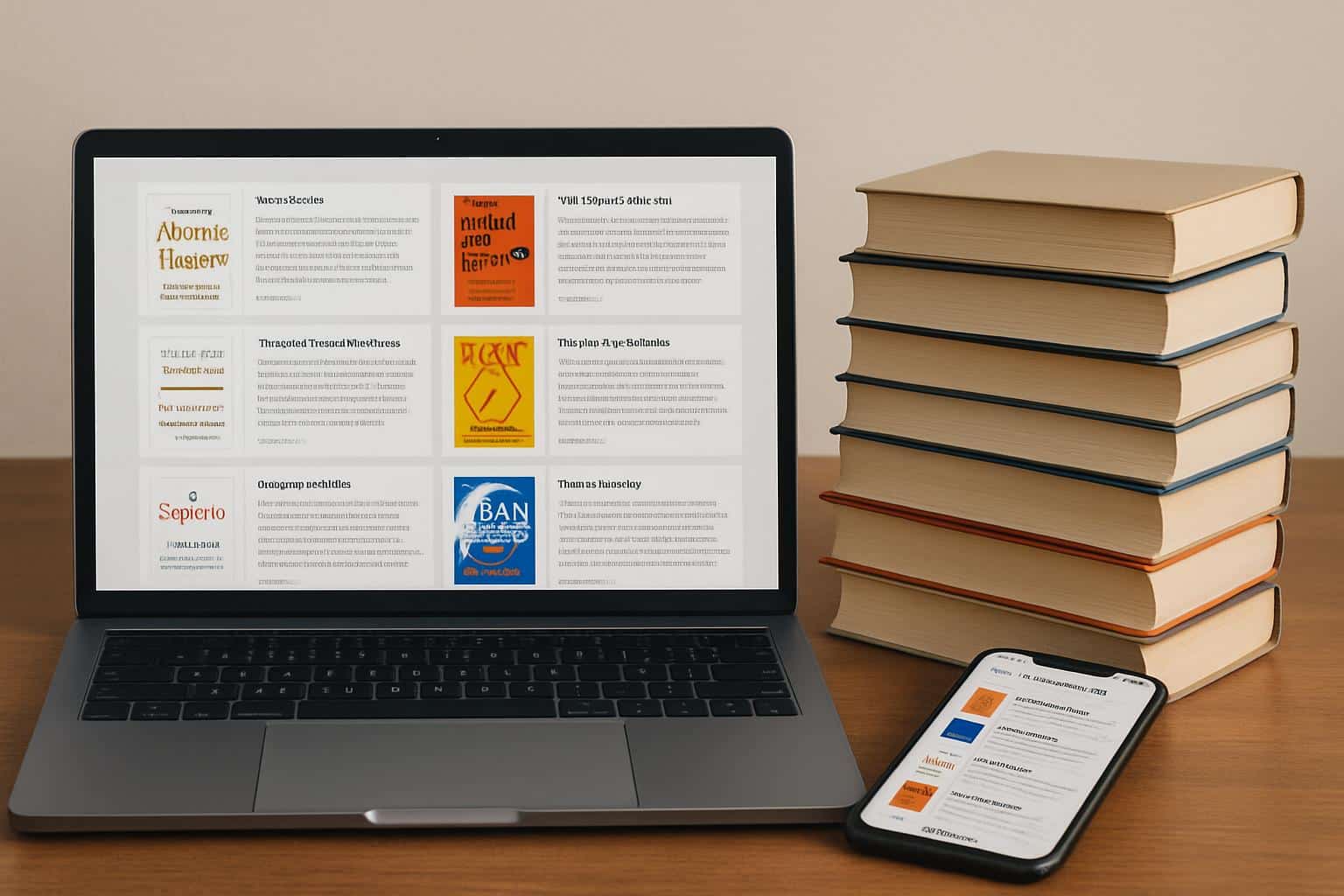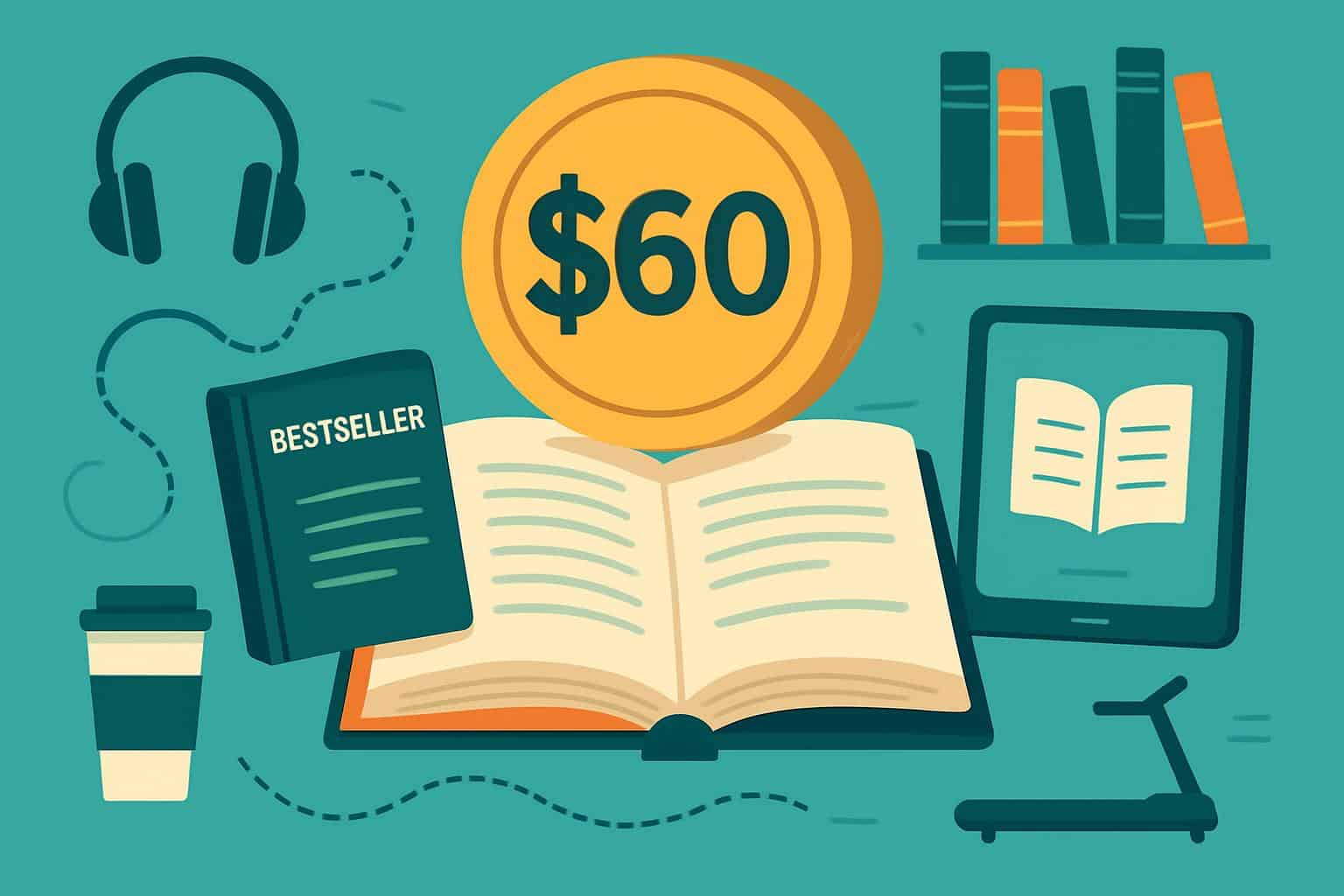Want the big ideas from bestselling nonfiction books, but don’t want to have to carve out the time to read? Now a one-time $60 payment gets you ongoing access to their library of compressed summaries of books (or “blinks”) that take about 15 minutes to read or listen to, turning commutes, coffee breaks, and treadmill time into actual learning.
With One Payment, Here’s Exactly What You Get
The deal features premium access to a library of thousands of nonfiction summaries that cover everything from leadership and productivity to psychology, entrepreneurship, personal finance, and beyond. Each title is condensed into bite-sized “blinks,” to help surface the author’s main point, key frameworks, and other concrete takeaways — all in service of helping you, our dear readers, become more thoughtful readers.
- With One Payment, Here’s Exactly What You Get
- Why Summaries Appeal to Contemporary Reading Habits
- How It Compares With Popular Subscription Apps
- Who Benefits Most From a One-Time Summary Library
- How to Get Real Value Out of Your Summaries
- Know the Limitations of Condensed Book Summaries
- Bottom Line: Is a One-Time $60 Summary Library Worth It?

Look for personalization features that offer you title suggestions based on goals, as well as offline access (ideal for travel) and streaks or achievements that hold you accountable. New summaries are added often, too – more than existed in the initial catalog, at least – which is handy if you’re hunting down the latest management or self-improvement blockbuster.
Why Summaries Appeal to Contemporary Reading Habits
Concentrated learning meshes with how so many of us are processing information today. Pew Research Center has repeatedly reported that about three-quarters of American adults read a book in one format or another each year, but the demands of time prevent many from finishing long nonfiction. A typical U.S. commute is just shy of a half-hour, according to federal transportation statistics — the perfect length for a single summary.
Audio helps, too. The Association of American Publishers has reported that audiobooks have been the fastest-growing format for years, racking up double-digit gains — and revenues usually in the hundreds of millions of dollars — across many recent reporting periods. By pairing succinct texts with audio narration, you can absorb what’s essentially the equivalent of a chapter’s worth of wisdom during a trip to the grocery store.
How It Compares With Popular Subscription Apps
Summary platforms have been subscription based so far. Subscription services like Blinkist, getAbstract, and Instaread charge monthly or yearly subscription fees. And while they tend to offer deep and enterprise-friendly catalogs, the costs can add up quickly — at $8 to $15 a month, you’ll pay the equivalent of this one-time $60 fee every four to eight weeks.
The pull here is predictability. You pay once and you avoid renewal creep or price hikes. And if you expect to sample as much as a summary or two per week, your effective cost-per-title can dip lower than the vast majority of normal subscriptions within just a few months.
Who Benefits Most From a One-Time Summary Library
Time-pressured professionals can skim a leadership classic before a strategy off-site, brush up on core concepts from books like “Atomic Habits” in order to keep a team challenge on course, or prepare for a sales negotiation by reading up again on best-practice tactics from popular negotiation titles. Like-minded entrepreneurs can test-drive frameworks from entrepreneurship staples before choosing which full tomes are worth a deeper dive.

Students and career switchers can get a broad foundation across disciplines — marketing, economics, design thinking — without being pegged to 10-hour reads. And lifelong learners can keep up a steady reading pace, turning idle time into knowledge compounding.
How to Get Real Value Out of Your Summaries
Use summaries as a decision filter. Try three competing books on a topic, and decide which one or two are worth reading all the way through. Clip core frameworks and examples to a “concept deck” in your notes app and review it each week so recall is set in concrete. You can pair the audio with other low-friction activities — walking the dog, doing a grocery run — to help establish a habit.
For teams, schedule a standing 15-minute “insight stand-up” where everyone contributes one takeaway and a real-world application. The accountability encourages retention and translates summaries into action.
Know the Limitations of Condensed Book Summaries
Summaries compress nuance. Behavioral science tomes and sprawling histories often barter depth for clarity at this length. Think of abridged editions not as a replacement, but as an enhancement to the foundational works you want to become familiar with. They’re great for perusing ideas, cementing memory, and speeding context — less so for citation-heavy research or literature review.
Also bear in mind that most of the summary libraries tend to be biased toward nonfiction; if you need literary criticism or full-length narratives, what you’ll require are primary texts or long-form criticism.
Bottom Line: Is a One-Time $60 Summary Library Worth It?
If you want a quicker route to the big ideas of bestselling books, then a one-time $60 payment for full access to a deep summary library is an intriguing bargain. You eliminate the monthly costs, gain flexibility in both reading and listening, and are able to leverage small windows of time into continuous learning. For the busy reader with lofty aspirations, it’s a streamlined on-ramp to more knowledge.

